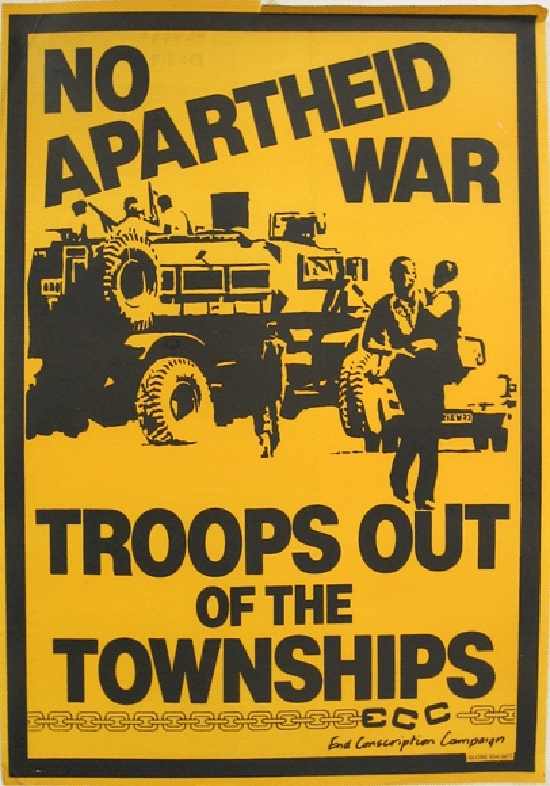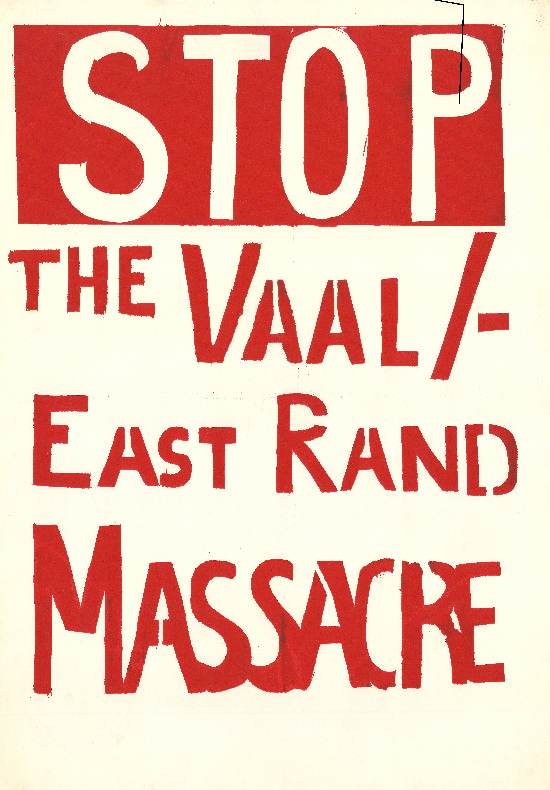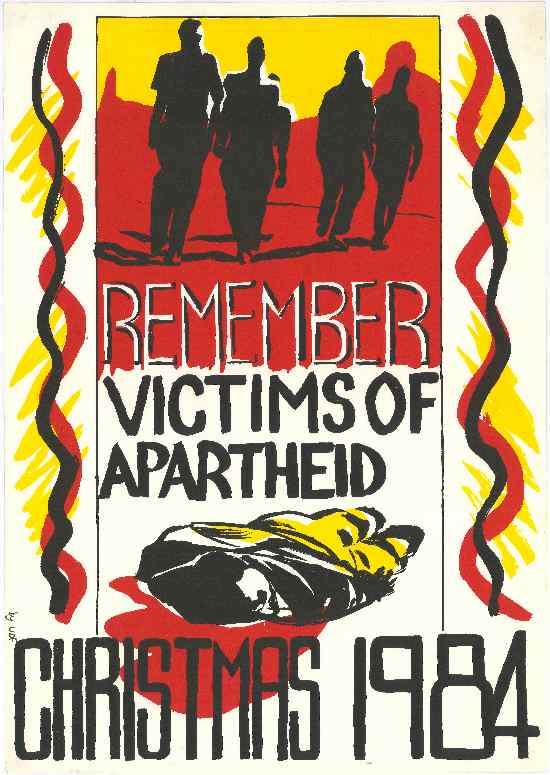 Between 5 and 6 November 1984, around 35 000 students, workers and township residents protested the newly formed Tricameral parliament in the largest stayaway since the 1960s. This has been described as one of the most significant periods of civil unrest in the decade leading up to the demise of apartheid.
Between 5 and 6 November 1984, around 35 000 students, workers and township residents protested the newly formed Tricameral parliament in the largest stayaway since the 1960s. This has been described as one of the most significant periods of civil unrest in the decade leading up to the demise of apartheid.
Since its launch in 1983, the United Democratic Front (UDF), had played a powerful role in raising awareness and supporting protest action. However, with most of the UDF national leadership either in detention or in hiding by mid 1984, the onus to oppose state repression and military presence in townships fell upon local organisations, many of whom were UDF affiliates. From September 1984, Vaal townships began to experience political unrest, with stayaways organised in the townships of Boipatong, Bophalong, Evaton, Sebokeng and Sharpeville.
The South African Defence Force (SADF) responded with Operation Palmiet, which involved the permanent occupation of over seven thousand troops throughout the townships. By the end of October, the Transvaal Regional Stayaway Committee was formed, including a number of UDF affiliates. Consisting of thirty seven organisations, including bodies representing both students and workers, the coordinating committee included Moses Mayekiso, Themba Nontlane, Oupa Monareng and Thami Mali. This committee coordinated a two-day stayaway from 5 November. Over four hundred thousand pamphlets were distributed, advertising the call to remove the SADF from the townships, to suspend rent and bus fare increases, and to recognise the grievances of school protest groups such as COSAS.
as COSAS.
Despite its success, there is evidence of violent tactics, with some residents being attacked with sjamboks to prevent them from going to work. The homes of policemen and councilors, as well as state-funded beerhalls, were targeted for arson during this period. The SADF troops responded with a heavy hand, and mortality rates were high: by the end of the year, there were over one hundred and fifty victims of this violence.
Following the well-supported stayaways, the UDF's national leadership became more vocal about township unrest, but did not support the call from affiliates to hold a second strike in December. Instead, the UDF called for a period of mourning for the hundreds who had died over the course of the year. This provided a unique opportunity for millions to grieve, and express their support for the struggle.
‘Black Christmas' was thus declared, turning the festive season into a season of sorrow.
UDF Virtual Exhibition
As part of our commitment to making archives accessible, SAHA has developed a virtual exhibition in conjunction with the Nelson Mandela Foundation. Launched in August 2008 to commemorate 25 years since the launch of the United Democratic Front (UDF), this free, online resource uses archival materials to explore the vital role the UDF played in bringing democracy to South Africa.
Visit the UDF virtual exhibition.
Learn more about SAHA's virtual exhibitions.
UDF collections
Reflecting SAHA's history as an archive established by UDF affiliates, SAHA has a significant range of UDF materials, including documents, posters, photographs and ephemera in its archive. These collections include materials relating to the formation of the UDF, various UDF affiliates, events, campaigns and publications from across the country.
Browse SAHA's UDF collections





 Between 5 and 6 November 1984, around 35 000 students, workers and township residents protested the newly formed Tricameral parliament in the largest stayaway since the 1960s. This has been described as one of the most significant periods of civil unrest in the decade leading up to the demise of apartheid.
Between 5 and 6 November 1984, around 35 000 students, workers and township residents protested the newly formed Tricameral parliament in the largest stayaway since the 1960s. This has been described as one of the most significant periods of civil unrest in the decade leading up to the demise of apartheid.
 as COSAS.
as COSAS.